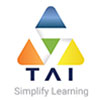The main topics of this Certified Agile training course include defining the Core Agile Artefacts, Holding Sprint Planning meeting, Hosting daily Agile, Iterating the Product backlog, Planning a product delivery road map, Creating and linking user personas. It further trains you on INVEST and SMART frameworks, Prioritisation techniques, MoSCoW, team Work Establishment and Manage and reduces External dependencies.
About Agile
Who can take this training?
✓ Software Testers, Developers, Team Leads, QA Engineers, QA Managers and Business Analysts
✓Customers and Clients who are in day-to-day connection with their working team
✓Professionals from any domain can go for this detailed Agile training
✓MBA
Prerequisites
✓ There are no prerequisites to start this Agile certification training. Anyone working in a Project team in IT industry can learn this course
✓ General Project management experience can be an added advantage
Course Outline
Introducing Agile Principles
Defining Agile values and principles, Contrasting Waterfall and Agile product development philosophies, Confronting the challenges of adopting Agile, Creating a cross–functional team.
Defining the Agile Framework
Embracing Agile
Defining the core Agile Framework, Core Agile team, artifacts and ceremonies, Adapting traditional business process to Agile, Applying core Agile Values, Leveraging checks and balances
Agile Ceremonies and Artifacts
Defining the Core Agile Artifacts
Creating the Product Backlog, Implementing the Sprint Backlog, Defining the Definition of Done, Developing potentially shippable product increment
Simulating the Core Agile Ceremonies
Refining the Product Backlog, Holding the Sprint Planning meeting, Hosting the Daily Agile, Leading Sprint Reviews, Facilitating successful Sprint Retrospectives
Refining the Product Backlog
Iterating the Product Backlog
Developing the Product Vision, Building the Product Backlog, Continuously refining the Product Backlog, Turning ideas into action, Applying the DOVE framework
Refining Product Delivery
Comparing iterative and incremental delivery, Decomposing Epics into features and stories, Releasing products with Minimal Marketable Features, Planning a product delivery roadmap
Estimating and Prioritizing Product Backlog Items
Defining user personas
Creating realistic user Personas, Visualizing scope through story maps, Linking user personas to use cases
Creating user stories
Writing users stories with the Connextra format, Evolving product requirements, Applying INVEST and SMART frameworks to focus user stories, Developing products with progressive elaboration, Breaking user stories into tasks, Defining appropriate acceptance criteria.
User story estimating
Sizing user stories, Estimating effort and business value level through relative measurement, Comparing and contrasting affinity and planning poker estimation techniques
Prioritizing the Product Backlog
Ranking product backlog item priority at the release, product and project level, Utilizing MoSCoW and other prioritization techniques, Applying the Pareto principle to product planning, Identifying high–priority items for sprint planning
Agile Responsibilities to the Team
Growing the Agile team
Enforcing the Agile process, Establishing team working agreements, Performing as a servant–leader, Removing Impediments, Becoming an Agile coach for your team
Ensuring long–term success
Continuously improving the team, Reporting appropriate metrics, Managing and reducing external dependencies, Adopting best practices for software engineering, Acting as an Agile champion in your organization
Call Now- +91-921-276-0556


